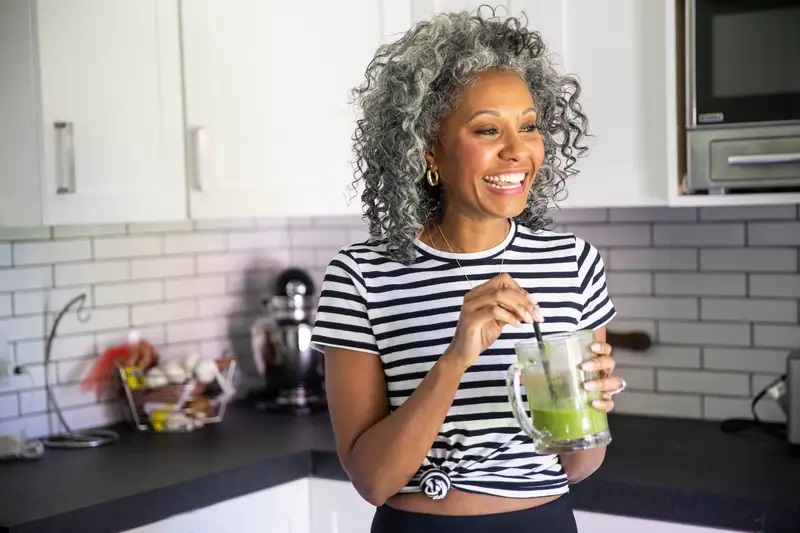Aging is inevitable, but how you age is largely within your control. Research shows that adopting key lifestyle behaviors can help you explore how can we live longer in a healthier, more independent way, regardless of your current age. From staying physically active to maintaining social connections, these evidence-based healthy aging tips can reduce your risk of chronic diseases like heart disease, diabetes, and dementia while enhancing your overall quality of life. Whether you’re planning for your own future or supporting older loved ones, it’s never too late to start making changes that matter.
Stay Physically Active for Strength and Mobility
Regular exercise is one of the most powerful tools for healthy aging. Its benefits go far beyond weight management. Consistent physical activity improves balance, which significantly reduces the risk of falls—a major concern for older adults. It also enhances cognitive function and is linked to increased longevity. Many people worry it’s too late to start, but the science is clear: your body responds positively to exercise at any age.
Recommended Exercise Types and Duration
For a well-rounded routine, the Centers for Disease Control and Prevention (CDC) recommends including four types of exercise. Aim for a mix that feels good for your body.
- Aerobic Activity: At least 150 minutes of moderate-intensity activity (like brisk walking, swimming, or cycling) per week. This strengthens your heart and lungs.
- Strength Training: Work all major muscle groups at least two days a week. You don’t need heavy weights; resistance bands and bodyweight exercises are effective for maintaining muscle mass, a key component of healthy aging.
- Balance Exercises: These are essential and can be as simple as standing on one foot. Tai chi and yoga are also excellent options. Strong balance is critical, and you can find dedicated tips for fall prevention to add to your routine.
- Flexibility Work: Gentle stretching and yoga help maintain your range of motion, making everyday activities easier. This comprehensive approach is key to staying active as you age safely and effectively.
Overcoming Barriers to Physical Activity
Starting or maintaining an exercise routine can be challenging, especially with chronic pain, joint issues, or a fear of injury. The key is to start small and listen to your body.
If you have limited mobility, try chair exercises or water aerobics, which are gentle on the joints. Even 5-10 minute sessions throughout the day add up. Finding a friend to walk with can provide motivation, and a physical therapist can create a personalized plan that addresses your specific needs and concerns.
Prioritize Nutrient-Dense Foods and Healthy Eating Patterns
Nutritional needs change as we get older. Metabolism slows, and the body may not absorb certain nutrients as efficiently. That’s why focusing on nutrient-dense foods becomes more important than ever. Healthy eating patterns like the Mediterranean diet and the DASH diet have been consistently linked with better health outcomes and longevity.

Essential Nutrients for Aging Bodies
While a balanced diet is crucial, some nutrients deserve special attention:
- Protein: Protects against muscle loss (sarcopenia). Sources include lean meats, fish, beans, and tofu.
- Calcium and Vitamin D: Work together for bone health. Find them in dairy products, fortified foods, and leafy greens.
- B Vitamins (especially B12): Crucial for brain health and energy. Found in animal products and fortified cereals.
- Omega-3 Fatty Acids: Support heart and brain health. Fatty fish like salmon and mackerel are excellent sources.
- Fiber: Aids digestion and prevents constipation. Look for it in whole grains, fruits, and vegetables.
Foods to Emphasize and Limit
Focus on filling your plate with whole, unprocessed foods. Prioritize leafy greens, colorful berries, fatty fish, nuts, and whole grains. These foods are packed with vitamins, minerals, and antioxidants that fight inflammation.
At the same time, try to limit foods that can negatively impact your health, such as processed meats, sugary drinks, excessive salt, and trans fats. Reducing these can lower your risk of high blood pressure, heart disease, and other chronic conditions.
Maintain Strong Social Connections and Community Ties
Social health is just as important as physical health. Research from Brigham Young University suggests that chronic loneliness can be as harmful to your health as smoking 15 cigarettes a day. It can weaken the immune system and increase the risk of depression and cognitive decline. It’s important to distinguish between living alone, which is a circumstance, and loneliness, which is an emotional state.

Ways to Build and Strengthen Relationships
Nurturing your social circle is an active process. Consider joining a club for a hobby you enjoy, volunteering for a cause you care about, or taking a class at a local community center. Technology makes it easier than ever to connect with family through video calls. If you’re wondering how to make friends in your fifties, joining a group centered on a hobby is an excellent start.
Recognizing and Addressing Social Isolation
Be aware of the signs of isolation in yourself or others, such as withdrawal from activities or a persistent low mood. Resources like local senior centers or the Eldercare Locator can connect you with community programs. It’s okay to admit you feel lonely, and seeking connection is a sign of strength.
Keep Your Mind Sharp and Engaged
Just like your muscles, your brain needs a workout. The concept of cognitive reserve suggests that challenging your brain throughout life builds resilience against age-related memory changes. Evidence shows that lifelong learning may help delay the onset of conditions like dementia.
Brain-Boosting Activities and Hobbies
Variety and novelty are key. Instead of doing the same crossword puzzle every day, try something new. Learn a few phrases in a new language, pick up a musical instrument, or join a book club. Strategy games, creative writing, and even learning new tech skills all help keep your brain sharp.
Protecting Brain Health Through Lifestyle
The brain and body are deeply connected. Protecting your cognitive health involves many of the same habits that support your physical health. This includes getting 7-8 hours of quality sleep, managing blood pressure and cholesterol, limiting alcohol, and avoiding smoking. Treating hearing loss early is also important, as it is linked to a higher risk of cognitive decline.
Schedule Regular Health Screenings and Preventive Care
Preventive care is a cornerstone of healthy aging. Regular check-ups and screenings can catch potential problems early when they are most treatable, helping you maintain your health and independence for longer.
Essential Screenings by Age and Gender
Your doctor will recommend a screening schedule based on your personal health profile, but common ones include:
- Blood pressure and cholesterol checks
- Screenings for diabetes and certain cancers (colorectal, breast, prostate)
- Bone density scans
- Regular vision and hearing tests
- Dental check-ups
Talk to your healthcare provider to create a schedule that’s right for you.
Making the Most of Doctor Visits
To have an effective appointment, go prepared. Keep an updated list of your medications and any supplements you take. Write down your questions beforehand so you don’t forget them. Don’t hesitate to bring a family member to help take notes. Be honest about your symptoms and ask about potential side effects of any new medications.
Manage Stress and Prioritize Mental Wellness
Chronic stress can accelerate the aging process by increasing inflammation and cortisol levels. Older adults often face unique stressors, from health concerns and caregiving responsibilities to major life transitions like retirement. Acknowledging these challenges is the first step to managing them.
Evidence-Based Stress Reduction Techniques
You can actively manage stress with simple, proven techniques. Mindfulness meditation, deep breathing exercises, and yoga can help calm your nervous system. Many people find journaling, spending time in nature, or practicing gratitude to be effective ways to shift their perspective and reduce anxiety.
When to Seek Professional Mental Health Support
There should be no stigma around seeking mental health support at any age. If you experience persistent sadness, anxiety that interferes with your life, or a loss of interest in things you once enjoyed, it may be time to speak with a professional. Therapists specializing in geriatric care can provide valuable support, and teletherapy has made it more accessible than ever.
Get Quality Sleep for Recovery and Health
While sleep patterns can change with age, adults still need 7-9 hours of quality sleep per night. It’s a myth that older people need less. Poor sleep is linked to a higher risk of falls, cognitive issues, and weakened immunity. Prioritizing sleep is not a luxury; it’s essential for your body’s recovery and repair processes.

Creating an Age-Friendly Sleep Environment
Make your bedroom a sanctuary for rest. Keep the room cool, dark, and quiet. If you have to get up at night, use a dim nightlight to reduce fall risk. Ensure your mattress is comfortable and supportive. Talk with your doctor if you suspect medications are interfering with your sleep.
Developing Healthy Sleep Habits
Good sleep hygiene can make a world of difference. Go to bed and wake up around the same time each day, even on weekends. Limit caffeine in the afternoon and avoid heavy meals close to bedtime. Create a relaxing pre-sleep routine, like reading a book or listening to calm music, to signal to your body that it’s time to wind down.
Your Journey to Healthy Aging
Healthy aging isn’t about trying to look 25 again. It’s about feeling your best, staying engaged with life, and maintaining your independence for as long as possible. By incorporating these evidence-based strategies, you are investing in your long-term well-being. These strategies are foundational to learning how to age gracefully in your 60s and beyond.
Every small, positive choice you make contributes to a healthier future. For more insights on wellness and personal growth, explore the resources here at Not One Type.


You may also like this
How to Make Friends in Your Fifties: Proven Strategies to Build Meaningful Connections
Making friends in your fifties can feel like a unique challenge, but it’s far from...
Nov
How to Make Friends as an Older Woman: 12 Proven Ways
Making friends as an older woman is not only possible but essential for your mental...
Nov
Complete Guide to Fall Prevention: Tips to Keep Seniors Safe and Independent
Falls represent one of the most serious health threats facing older adults today. According to...
Nov
Staying Active as You Age: A Complete Guide to Exercise and Fitness for Older Adults
Staying active as you age is one of the most powerful choices you can make...
Nov
How to Be Healthy at 50: A Complete Wellness Guide for Women
Turning 50 is a significant milestone. It’s a time of transition, reflection, and new opportunities,...
Nov
How to Age Gracefully in Your 60s: A Complete Guide to Thriving in Your Sixth Decade
Your 60s represent a vibrant decade filled with opportunities for growth, wellness, and fulfillment. Aging...
Nov